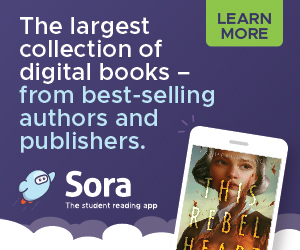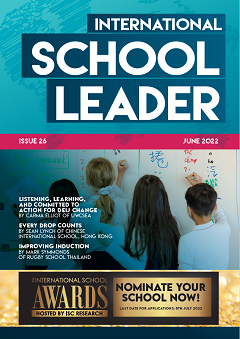Sunny Thakral participated in a panel session at the ISC Research Edruptors Conference, engaging many educators with his solutions for sustainable tech-supported teaching and learning.
International schools are turbulent beasts. With roving staff populations, no two years are ever the same. A common challenge encountered is ensuring that new staff are brought up to speed with the systems, processes and digital pedagogy that might be central to a school’s ethos. This often results in induction week in-service training (INSET), perhaps a few support sessions throughout the year, maybe an online self-help platform, continuous professional development (CPD) opportunities and generally that’s about it.
If you did a survey or interviewed new staff (we did), you will find that quite a few are often so overwhelmed that a lot of the induction information goes over their head. The cognitive load is enormous in such a short space of time, and most new staff end up finding their own way through it over time. It isn’t surprising to find that the majority hardly utilise the most advanced functions of systems implemented in schools. Even staff who jot things down on pads can often not refer to them again, instead preferring to ask others to help when the need arises. Soon enough, we end up with new staff as old staff, and the cycle begins again.
Knowing your digital ecosystem
To break out of this cycle, a school needs to establish digital core competencies or, as we call them, Digital Literacy Functional Skills. These skills are the minimum required to participate in the day-to-day operations and to reduce the invariable stress, lost time and impact on wellbeing that eventually occurs.
These functional skills can only be identified if a school knows its digital ecosystem inside out. Those all-important bouquets of technologies that are essential to make teaching and learning bloom. The big-ticket items like information systems, communication, and productivity platforms are well known centrally; however, those websites and other smaller technologies used within departments and teams can be overlooked. This can lead to fragmentation and similar technologies being utilised for the same purposes, impacting both cost and the eventual staff and student cognitive load. A key question to ask is whether we genuinely need multiple platforms that offer similar benefits that force stakeholders to learn and navigate multiple systems. An example is the use of quiz platforms like Quizlet, Quiz, Quizalize, Socrative and Kahoot!.
Moving towards a staff-centric approach to digital pedagogy
At Harrow Beijing, we faced a similar problem exacerbated by the initial stages of the pandemic where teams experimented with different types of digital services and technologies to meet the needs of our learners. Continuing with the previous example, due to our investigation, we identified seven quiz platforms being used in our secondary section alone.
As new staff joined at the beginning of the year, it was clear that their tech skills were on a broad spectrum from the outset. Similarly, existing staff, due to the turbulent nature of lockdown, were experimenting with a wide variety of tools resulting in a significant cognitive load on them and the students. The school had introduced Microsoft Teams as the central platform in January 2020 and moved away from its traditional managed learning environment.
In this context, we established our Digital Literacy focus group to take a more staff-centric approach to digital pedagogy. The group was staffed by volunteers from across the school, representing a wide variety of stakeholders. Their remit was to identify the core tools and the skills needed for proficiency along with two other strands involving artificial intelligence in education and measuring the impact of technology as part of the whole school vision. A shared vision was established by the group to ensure we were looking at a single statement that outlined our approach to technology: “Impactful technology use, empowering all to create, lead and participate in meaningful learning experiences.”
A managed move towards digital literacy
Our first session focused on upskilling staff in the group and providing professional development on what digital literacy meant and what digital functional skills are. We established a baseline to ensure that all of us were using the same language and eliminated any early misconceptions.
It was essential to model and curate resources rather than let the group explore on their own. The main reason was to make productive use of time. Getting everyone to go out and explore might bring in new perspectives, but it also has the pitfall of getting staff off-track and losing that momentum which is essential to bringing about change.
By January 2021, we delved a bit deeper into real-world impact and started exploring the use of technology, from planning to teaching and learning to behaviour management and more. We started identifying the tools we utilised in our departments on a day-to-day basis in addition to the central toolsets mandated by the school, such as Teams and iSAMS.
A working document that outlined common technologies used by teachers in their classrooms was created. We even identified why they were being used and who the experts were, along with benefits and issues outlined by staff who were actually using these technologies. This rich repository of practitioner data helped us to eventually streamline the resources on impact-based comparisons rather than simple preferences and familiarity.
The group analysed the collated data and created a set of functional skills based on the experiences and issues encountered by staff. A secondary list was created for bespoke resources used within departments. These were then taken back to departments, and initial trials were conducted based on fitness for purpose and audience understanding.
Finally, these were shared with staff as part of our focus group presentations.
The value of a tech databank
Staff evaluated their skills towards the end of the year, and the collated data is now helping us plan support for the new academic year. The open databank will also allow staff to search for a colleague who is an expert in an area they need support with. The functional skills list can also be used during recruitment and staff induction to ensure a tailored induction rather than a generic one. Another benefit is that the data will allow us to map progress year on year as we can review how staff developed their functional skills over time and address gaps in our tech CPD provision.
As contexts and technology constantly evolve, the next stage for us is to involve students in the process and start a deep dive into revisiting the digital functional skills they might need for the future.
Moving towards staff-centric digital literacy
- Tech focus groups or committees should have representation from across the school, not just enthusiasts
- Review targeted research and its application in your context
- Communicate, communicate, communicate
- Redesign your tech CPD provision and ensure it is differentiated
- Build time to share best practice
- Annual reviews and updates are a must
 Sunny Thakral is Director of Educational Technology Integration and Innovation at Harrow Beijing. Connect directly with Sunny on LinkedIn.
Sunny Thakral is Director of Educational Technology Integration and Innovation at Harrow Beijing. Connect directly with Sunny on LinkedIn.
Subscribe to ISL Magazine for more!


